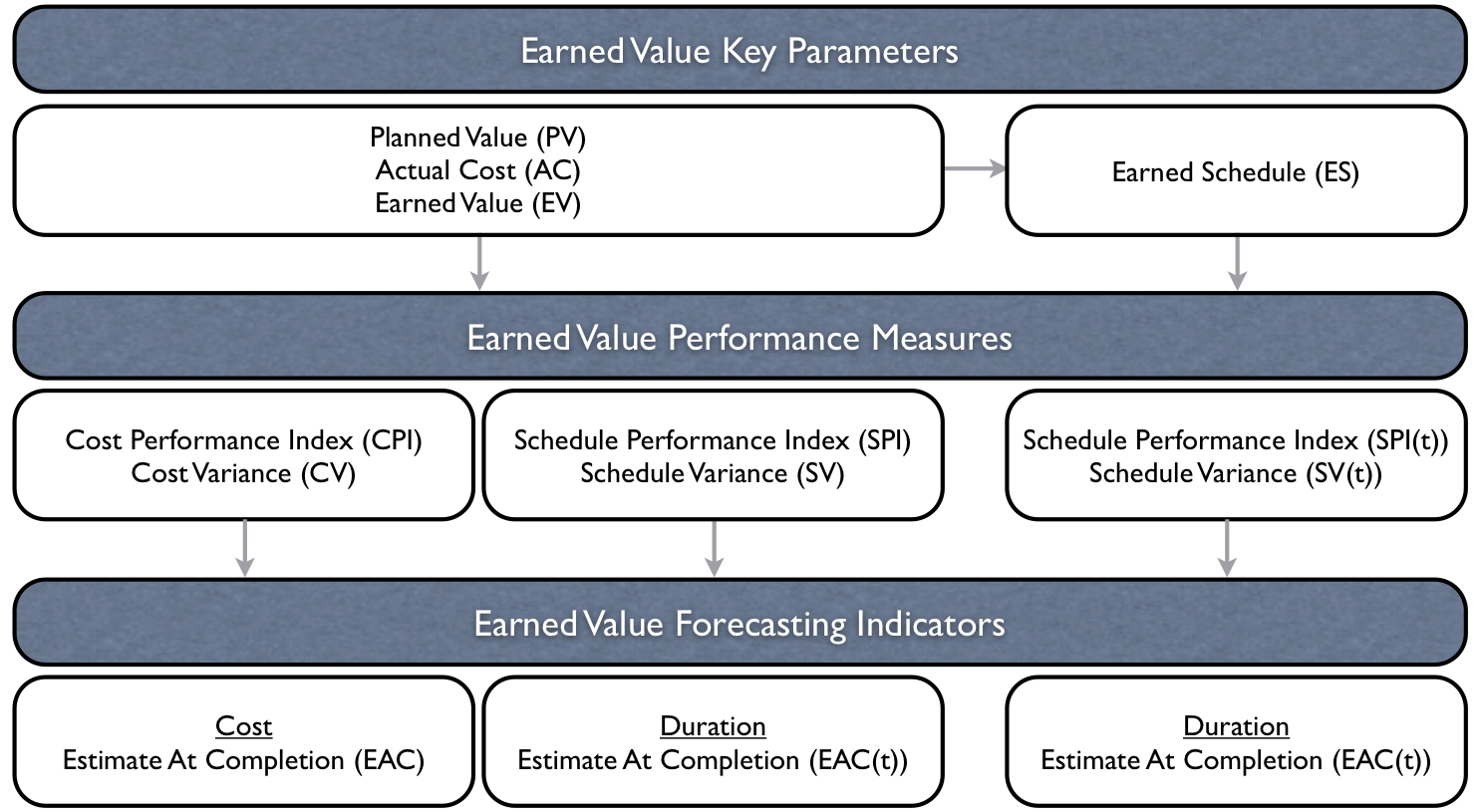Earned Value Management: An overview
Controlling a project is key to the success or failure of the project. Measuring the project performance along the life of the project is a way to provide early warning signals that can be used as triggers for corrective actions in case the project is in danger. Earned Value Management (EVM) is a well-known technique to control the time and cost performance of a project. It is a methodology used since the 1960s, when the American Department of Defense proposed a standard method to measure a project's performance. The system relies on a set of often straightforward metrics to measure and evaluate the general health of a project. These metrics serve as early warning signals to timely detect problems or to exploit project opportunities. This article gives a brief overview of the main parameters and indicators used in an EVM approach, in order to give answers to the following questions, as summarized along the following lines:
- Key parameters: what is the difference between plan, cost and progress?
- Performance measures: what is the current project performance (time and cost)?
- Forecasting: what is the expected project duration and total cost (given current performance)?

- Planned Value (PV): Time-phased budget baseline as an immediate result of the baseline schedule, often called the Budgeted Cost of Work Scheduled (BCWS).
- Actual Cost (AC): The cumulative actual cost spent at a given status date, often referred to as the Actual Cost of Work Performed (ACWP).
- Earned Value (EV): Represents the amount budgeted for performing the work that was accomplished by a given status date, often called the Budgeted Cost of Work Performed (BCWP) and equals the total activity (or project) budget at completion multiplied by the percentage activity (or project) completion (PC) at this particular point in time (= PC * BAC).
- Earned Schedule (ES): Translation of the EV of a given status date into time units by determining when this EV should have been earned in the baseline schedule.
- Time performance: The Schedule Performance Index (abbreviated as SPI or SPI(t) depending on whether EV or ES is used) is a measure to express the current time performance of the project, showing whether the project is ahead of schedule (>100%), on time (=100%) or late (<100%).
- Cost performance: The Cost Performance Index (abbreviated as CPI) is a measure to express the current time performance of the project, showing whether the project cost is below budget (>100%), on budget (=100%) or above budget (<100%).
- Time forecasting: The Expected At Completion - Time (abbreviated as EAC(t)) is a forecast of the final project duration at the current status date, given the current project performance. Obviously, this forecast might differ from the baseline Planned Duration (PD).
- Cost forecasting: The Expected At Completion - Cost (abbreviated as EAC) is a forecast of the total project cost at the current status date, given the current project performance. Obviously, this forecast might be different from the original budget or Budget At Completion (BAC).
© OR-AS. PM Knowledge Center is made by OR-AS bvba | Contact us at info@or-as.be | Visit us at www.or-as.be | Follow us at @ORASTalks


